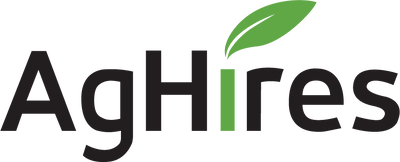
Navigating through periods of unemployment can be a challenging chapter in anyone's career path, but it can also be an opportunity for growth and skill development. Whether you're between jobs due to unforeseen circumstances or making a conscious decision to step back and reassess your professional path, how you utilize this time can significantly impact your future job prospects. To help you fill gaps in your resume, we put together some strategic ways to fill employment gaps, making you a more compelling candidate for potential employers. By focusing on personal development, skill enhancement, and proactive networking, you can turn a seeming setback into a springboard for your next career move. Join us as we explore actionable tips and practical suggestions to keep your resume robust and reflective of your continued professional journey.
Contract Work
Just because you don’t have a full-time job doesn’t mean you can’t be working. If you have a skill or service you can offer companies on a contract basis, use that to your advantage. Create a business name of your own you can operate under, then take on as much or as little contract work as your time allows. This keeps you sharp and is a good way to fill a gap on a resume. It may also lead to industry connections or new skills you can leverage throughout your ag job search.
Temporary Work
Temporary work is used in many industries, and the ag industry is no different. Unique to the ag industry, though, is its seasonality. Depending on the time of year you are in an employment gap, you may be able to find temp work harvesting apples, hauling hay, or working at a livestock market, for example. There are several agencies at your disposal to place you in temp work positions within and outside of the agriculture industry.
Continued Education
It’s always a good idea to invest in your skills, knowledge, and expertise, and there are endless ways to do so. Is there a certificate that would make you more qualified for the job you’re seeking next, or some training that could make you more competitive in the job market? Now’s the time. Whether it’s an online class or at a local school, attending extension meetings and learning about your particular ag sector, or taking LinkedIn Learning courses, there are numerous ways you can grow your eligibility without an official job title.
Volunteer
It’s never a bad time to volunteer, and now that you may have some free time, take this opportunity to get more involved in your community or industry in a volunteer capacity. In agriculture, there are several groups you could easily work alongside, such as local 4-H or local FFA chapters. You can also use your professional skills to help. For example, if you’re in the marketing sector of the industry, you can help a local group promote an upcoming event. There are always non-ag organizations that would love your help, too. You may not be building the work experience portion of your resume, but volunteer experiences and giving back to your community also go a long way.
There may be reasons for your unemployment that don’t put you in a great position to work full-time, such as taking care of a loved one or taking medical leave. And that’s okay because life happens. But consider what small things you could do during that time to keep yourself sharp, motivated, and prepared when it comes to finding your next ag job.

How to Write Employment Gaps on Your Resume
There is no reason to hide employment gaps from your resume, especially if you filled them with volunteering, continued education, or contract work. Gaps related to things such as taking care of a family member are no exception either. Remember, being honest on your resume is always best. But what is the best way to include these gaps on your resume?
To keep it simple, writing gaps on your resume can be done very similarly to that of traditional or full-time roles. You can list these experiences in the same section and format as your other positions, in reverse chronological order (with your most recent experience at the top). Indicate the type of work by adding a dash after the job title. For example, “Agronomist – ABC Company – Contract Position”, and include the dates of the contract you worked.
The same goes for employment gaps spent volunteering or continuing your education. Treat and write them as you would regular jobs on your resume. In these sections, be sure to highlight relevant, transferable skills you acquired during that time and projects you worked on.
Other reasons for unemployment such as undergoing medical treatment or staying at home with children can also be written in the same format but kept more brief. For example: “Stay at Home Parent – Full-time – August 2020 – June 2023."
Overall, no matter how your employment gap was spent, be honest about it on your resume and do your best to highlight how that time was beneficial to your career or professional journey.
Follow AgHires for more resources and to find ag job openings when the time comes! On the job hunt? Start your search at AgHires.com.






